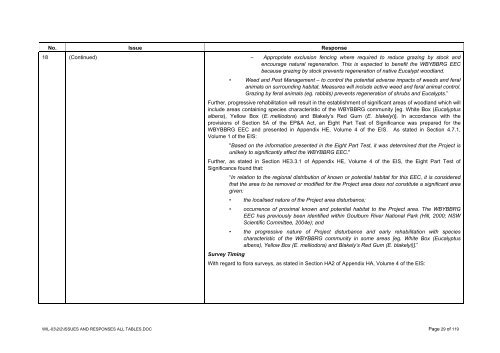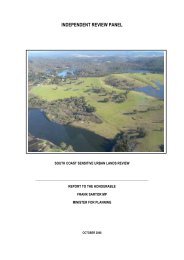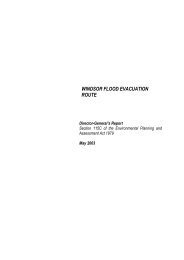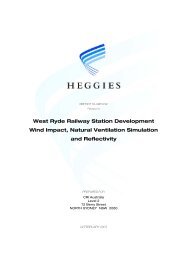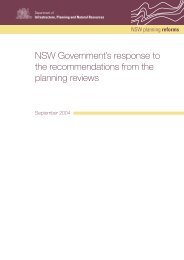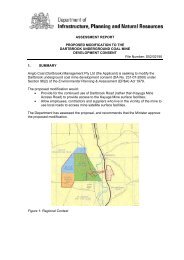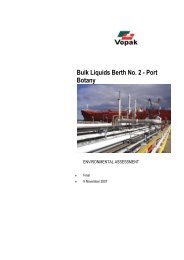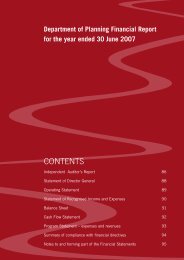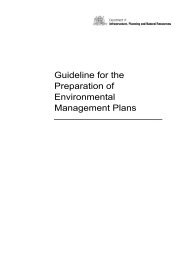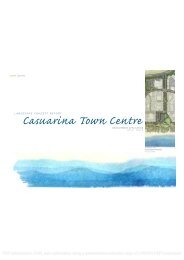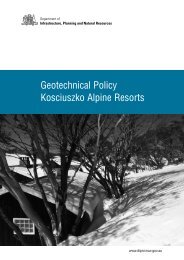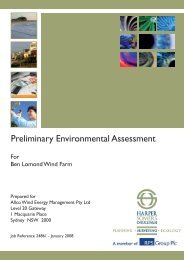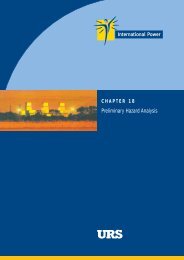wilpinjong coal project wilpinjong coal project - Department of ...
wilpinjong coal project wilpinjong coal project - Department of ...
wilpinjong coal project wilpinjong coal project - Department of ...
Create successful ePaper yourself
Turn your PDF publications into a flip-book with our unique Google optimized e-Paper software.
No. Issue Response<br />
18 (Continued) – Appropriate exclusion fencing where required to reduce grazing by stock and<br />
encourage natural regeneration. This is expected to benefit the WBYBBRG EEC<br />
because grazing by stock prevents regeneration <strong>of</strong> native Eucalypt woodland.<br />
• Weed and Pest Management – to control the potential adverse impacts <strong>of</strong> weeds and feral<br />
animals on surrounding habitat. Measures will include active weed and feral animal control.<br />
Grazing by feral animals (eg. rabbits) prevents regeneration <strong>of</strong> shrubs and Eucalypts.”<br />
Further, progressive rehabilitation will result in the establishment <strong>of</strong> significant areas <strong>of</strong> woodland which will<br />
include areas containing species characteristic <strong>of</strong> the WBYBBRG community [eg. White Box (Eucalyptus<br />
albens), Yellow Box (E. melliodora) and Blakely’s Red Gum (E. blakelyi)]. In accordance with the<br />
provisions <strong>of</strong> Section 5A <strong>of</strong> the EP&A Act, an Eight Part Test <strong>of</strong> Significance was prepared for the<br />
WBYBBRG EEC and presented in Appendix HE, Volume 4 <strong>of</strong> the EIS. As stated in Section 4.7.1,<br />
Volume 1 <strong>of</strong> the EIS:<br />
"Based on the information presented in the Eight Part Test, it was determined that the Project is<br />
unlikely to significantly affect the WBYBBRG EEC."<br />
Further, as stated in Section HE3.3.1 <strong>of</strong> Appendix HE, Volume 4 <strong>of</strong> the EIS, the Eight Part Test <strong>of</strong><br />
Significance found that:<br />
“In relation to the regional distribution <strong>of</strong> known or potential habitat for this EEC, it is considered<br />
that the area to be removed or modified for the Project area does not constitute a significant area<br />
given:<br />
• the localised nature <strong>of</strong> the Project area disturbance;<br />
• occurrence <strong>of</strong> proximal known and potential habitat to the Project area. The WBYBBRG<br />
EEC has previously been identified within Goulburn River National Park (Hill, 2000; NSW<br />
Scientific Committee, 2004e); and<br />
• the progressive nature <strong>of</strong> Project disturbance and early rehabilitation with species<br />
characteristic <strong>of</strong> the WBYBBRG community in some areas [eg. White Box (Eucalyptus<br />
albens), Yellow Box (E. melliodora) and Blakely’s Red Gum (E. blakelyi)].”<br />
Survey Timing<br />
With regard to flora surveys, as stated in Section HA2 <strong>of</strong> Appendix HA, Volume 4 <strong>of</strong> the EIS:<br />
WIL-03\2\2\ISSUES AND RESPONSES ALL TABLES.DOC Page 29 <strong>of</strong> 119


